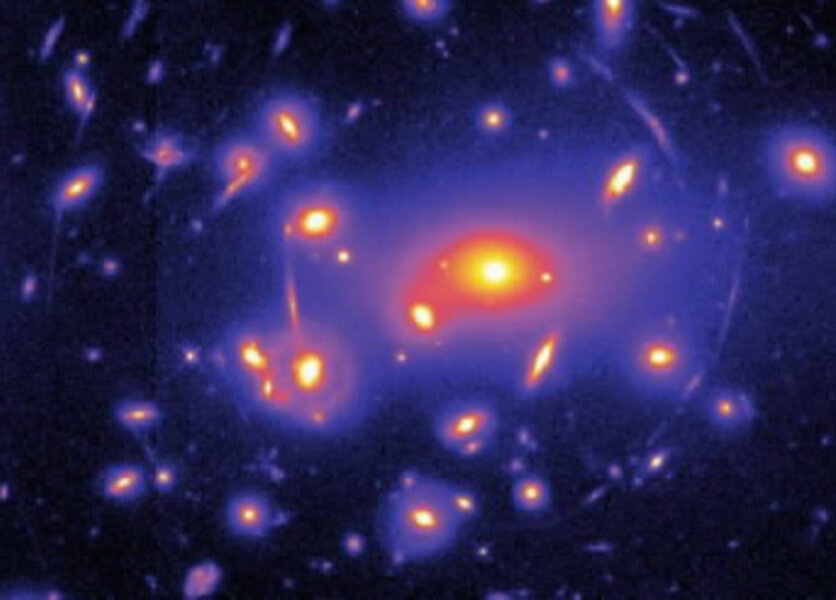Why dark matter still proves difficult to detect
The ever-elusive substance known as dark matter has once again avoided detection as the Large Underground Xenon (LUX) experiment, a incredibly sensitive dark-matter detector, completes its latest run.
Very little is known about dark matter, other than that it is thought to make up 80 percent of the matter in the universe and has never been directly observed. This experiment was designed around detecting weakly interacting massive particles (WIMPs), which most physicists consider, at present, to be the main contender for what dark matter is made of.
"LUX has delivered the world's best search sensitivity since its first run in 2013," Rick Gaitskell, a physicist at Brown University and co-spokesman for LUX, said in a statement. "With this final result from the 2014 to 2016 search, the scientists of the LUX Collaboration have pushed the sensitivity of the instrument to a final performance level that is four times better than the original project goals."
To shield the experiment from background radiation, LUX resides underground in a former South Dakota gold mine that now belongs to the Sanford Underground Research Facility. Inside, frigid liquid xenon is set up to produce a flash of light when particles of dark matter interact with an atom of normal matter. One mile of rock and 72,000 gallons of water prevent anything other than dark matter from setting off LUX’s xenon sensors, but throughout 20 months of data collection the lights never flickered.
This is one of three projects currently searching for dark matter including one by the International Space Station and another by CERN’s Large Hadron Collider (LHC).
But if dark matter has never been observed, or even really proven to exist, why are so many scientists so intent on finding it?
Very generally, there is the drive of scientific inquiry and the possibility of striking gold – like in 2013 when the LHC discovered the Higgs Boson.
More specifically, finding the source of dark matter is important because, without dark matter, much of our understanding of astrophysics and cosmology would fall apart. It has been found to be responsible for galaxy rotation curves, the gravitational bending of light around clusters, correlations of galaxies 500 million light years apart, and the collision of massive galaxy clusters, among many other phenomena occurring in the night sky.
“Well obviously until you have found a particle it is just a theory, but this theory just happens to quite possibly explain where four-fifths of the mass of the universe is, so that is the motivation.” Gaitskell told the Monitor. “From a particle physics point of view, we can't use the Standard Model of particle physics to explain what this mass is, what this extra material is, and from a cosmology point of view, although we know about dark matter from its gravitational effects, we just don’t know why it has the density it does or how it came to be produced.”
The negative findings this time around do not make the past 20 months a waste of time, however.
"A null result is significant as it changes the landscape of the field by constraining models for what dark matter could be beyond anything that existed previously," University College London physics and astronomy professor Cham Ghag, told Wired.
The same researchers have been funded by the US Department of Energy to build the next generation of LUX, the LUX-ZEPLIN experiment, which is currently in development and is said to be 70 times more sensitive.
"We viewed this as a David and Goliath race between ourselves and the much larger Large Hadron Collider at CERN in Geneva," Gaitskell said. "LUX was racing over the last three years to get first evidence of a dark-matter signal. We will now have to wait and see if the new run this year at the LHC will show evidence of dark-matter particles, or if the discovery occurs in the next generation of larger direct detectors."






